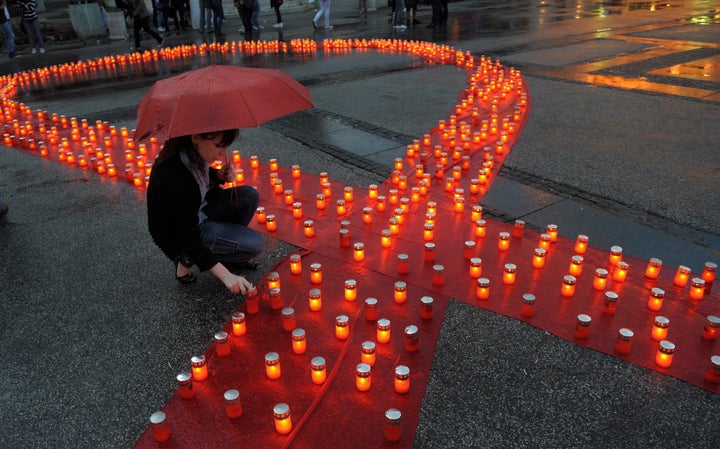
Last week I spoke at the UN's event on maternal and child health: "Every Woman, Every Child." What struck me is how little the world knows about the progress made in the fight against AIDS since it started for real in the developing world less than 10 years ago. The work of the Global Fund, established in 2002, and the President's Emergency Plan for AIDS Relief (PEPFAR), established in 2003, has saved the lives of over six million people with HIV. They're alive because they now have access to life-saving anti-retroviral medication -- an impossibility before 2002, when the cost of medication was driven down from between $10,000-$20,000 per year to $350 a year. That cost is now around $150 per year in the developing world -- it costs just 40 cents a day for the medication needed to help someone with HIV stay alive.
It's vitally important to tell the story of progress. If we don't, we run the risk of losing people's interest and support. If we don't, how can we expect them to care?
And we need them to care because public support drives leadership in these battles, and public engagement drives initiatives like (RED), which was set up to solve a problem for the Global Fund -- how to drive corporate profits to support its efforts -- so that it could fulfill its promise to be a public/private partnership.
In just five years, the (RED) collaboration of corporation and consumer has raised more than $175 million -- 35 times the amount the Global Fund was able to generate from the private sector in its first 4 years.
In addition to the funds it has raised, (RED)'s ability to inform the public about the pandemic and generate heat for an issue that's hard to get people's attention on has been equally important. The world's most iconic corporations and their world-class marketing departments have been working for the world's poorest people. It's a radical idea, an idea that works. And, if we can harness that power to raise awareness about the attainable goal to end transmission of HIV from moms to their babies in 2015, it could mark the beginning of the end of AIDS. More than 370,000 babies were born last year with HIV. In 2015, that number can be close to zero.
But it will take action. And (RED) is gearing up to inspire its army of friends, as well as the corporations we work with, to help deliver the 2015 goal. According to Devex, (RED)'s currently the only cause with over 1 million followers on Twitter and 1 million friends on Facebook. When you add the social media might of our partners, such as Starbucks, Converse and Apple, that number is 70 million. So the power that we can bring to inspire this generation to be the one that delivers an AIDS Free Generation in 2015 is formidable.
As my boss Bono says, every generation is known for something. Will this be the one to deliver an AIDS Free Generation in 2015? It can be. And if we achieve it, it could mark the beginning of the end of AIDS.